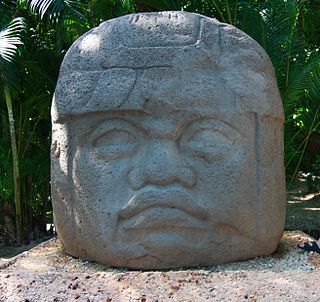 W
WDrosophila Fly Head is an outdoor 1988 sculpture by Wayne Chabre, installed on the University of Oregon campus in Eugene, Oregon, in the United States. The hammered copper sheet high-relief of a fly head measures approximately 3.5 feet (1.1 m) x 3 feet (0.91 m) x 2.5 feet (0.76 m). It was surveyed by the Smithsonian Institution's "Save Outdoor Sculpture!" program in March 1993, though its condition was undetermined. The sculpture is administered by the University of Oregon.
 W
WThe Godzilla head is a landmark and tourist attraction in Kabukichō, Shinjuku, Tokyo, Japan. The sculpture is accessible from Hotel Gracery Shinjuku's Godzilla Terrace, on the Shinjuku Toho Building. It depicts Godzilla, occasionally with "glowing eyes and smoky breath". The 80-ton head, based on Godzilla's appearance in Godzilla vs. Mothra (1992), was unveiled in 2015. Its placement on the Hotel Gracery's terrace matches Godzilla's 50 meter height seen during the Showa era films in the franchise.
 W
WHead I is a relatively small oil and tempera on hardboard painting by the Irish-born British figurative artist Francis Bacon. Completed in 1948, it is the first in a series of six heads, the remainder of which were painted the following year in preparation for a November 1949 exhibition at the Hanover Gallery in London. Like the others in the series, it shows a screaming figure alone in a room, and focuses on the open mouth. The work shows a skull which has disintegrated on itself and is largely a formless blob of flesh. The entire upper half has disappeared, leaving only the jaw, mouth and teeth and one ear still intact. It is the first of Bacon's paintings to feature gold background railings or bars; later to become a prominent feature of his 1950s work, especially in the papal portraits where they would often appear as enclosing or cages around the figures. It is not known what influences were behind the image; most likely they were multiple – press or war photography, and critic Denis Farr detects the influence of Matthias Grünewald.
 W
WHead III is an oil painting by Francis Bacon, one of series of works made in 1949 for his first one-man exhibition at the Hanover Gallery, in London. As with the other six paintings in the series, it focuses on the disembodied head of male figure, who looks out with a penetrating gaze, but is fixed against an isolating, flat, nondescript background, while also enfolded by hazy horizontal foreground curtain-like folds which seems to function like a surrounding cage.
 W
WThe Head of Franz Kafka, also known as the Statue of Kafka, is an outdoor sculpture by David Černý depicting Bohemian German-language writer Franz Kafka, installed outside the Quadrio shopping centre in Prague, Czech Republic. The kinetic sculpture is 11 metres tall and made of 42 rotating panels. Each layer is mechanized and rotates individually.
 W
WThe Meroë Head, or Head of Augustus from Meroë, is a larger-than-life-size bronze head depicting the first Roman emperor, Augustus, that was found in the ancient Nubian site of Meroë in modern Sudan in 1910. Long admired for its striking appearance and perfect proportions, it is now part of the British Museum's collection. It was looted from Roman Egypt in 24 BC by the forces of queen Amanirenas of Kush and brought back to Meroe, where it was buried beneath the staircase of a temple.
 W
WThe Olmec colossal heads are stone representations of human heads sculpted from large basalt boulders. They range in height from 1.17 to 3.4 metres. The heads date from at least 900 BC and are a distinctive feature of the Olmec civilization of ancient Mesoamerica. All portray mature individuals with fleshy cheeks, flat noses, and slightly crossed eyes; their physical characteristics correspond to a type that is still common among the inhabitants of Tabasco and Veracruz. The backs of the monuments often are flat. The boulders were brought from the Sierra de Los Tuxtlas mountains of Veracruz. Given that the extremely large slabs of stone used in their production were transported over large distances, requiring a great deal of human effort and resources, it is thought that the monuments represent portraits of powerful individual Olmec rulers. Each of the known examples has a distinctive headdress. The heads were variously arranged in lines or groups at major Olmec centres, but the method and logistics used to transport the stone to these sites remain unclear. They all display distinctive headgear and one theory is that these were worn as protective helmets, maybe worn for war or to take part in a ceremonial Mesoamerican ballgame.
 W
WOlmec Head, Number 8 is a colossal head sculpture. The original sculpture is located at the Museum of Anthropology in Xalapa, Veracruz.
 W
WThree Heads Six Arms is a sculpture by Chinese artist Zhang Huan. The work, composed of copper and steel, is 27 feet (8.2 m) tall and weighs 15 short tons (14 t). From May 2010 to February 2011, the sculpture was installed at the Joseph L. Alioto Performing Arts Piazza in San Francisco's Civic Center, before moving to Hong Kong later that year from May to July. A slightly modified version was exhibited in Florence in 2013.